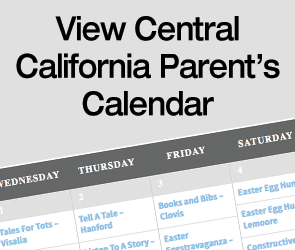Secrets of Creative Families: 10 Ways to Encourage Expressive Kids

by Christina Katz
Think the arts are frivolous, impractical, and over-priced? Sometimes a parent’s the-arts-just-aren’t-necessary attitude can tragically squelch a child’s creative aspirations. Whereas a parent who is too gung-ho about a child’s talents, may not realize that hijacking dreams robs a child of healthy feelings of ownership and independence. Fortunately, many parents find the balanced middle. They figure out how to quietly stand behind their child’s aspirations without taking over, and find ways to supportively usher them towards creating a colorful future. As parents of creative kids, how can we banish black-and-white, all-or-nothing thinking about the arts, and tap into our expressive parenting power instead? Here are ten tips that will help you encourage your kids to create the future that best suits them.
1. Be creative yourself.
Want creative kids? Start by being creative yourself. Before you can encourage your child to pursue their creative dreams, you have to nurture your own. I work at home as a writer, an author, and a writing coach. My home office is an explosion of creative accomplishments. My husband is a theater actor, director, and producer. His program mounts three or four theatrical productions a year. Our daughter has also developed her own creative hobbies over the years, like singing, dancing, acting, designing, and drawing.
2. Encourage hobbies.
If last year’s hobby was knitting and this year’s hobby is painting, that’s fine. Never force your kids to continue hobbies that no longer interest them. As long as the supplies are affordable and the experience is enriching, variety is good. And when a hobby sticks around, that works, too. Hobbies need to be about the joy of doing. The last thing a hobby should be about is perfection or competition. If you are overly involved in your child’s hobbies, take a step back. That’s their thing. Why not find your own?
3. Expose your family to the arts.
Art appreciation can be a family affair without becoming expensive. Surely you are not the only family in the neighborhood interested in exposing your family to culture. Team up with families in your neighborhood to attend shows and events at group discount rates. Check local museums for free days and local theaters for meet-the-actors shows. You can also find cultural opportunities through the public library, in local theaters, at the local community center, through local schools and colleges, and by taking advantage of special broadcasts at your local movie theater.
4. Make room for imagination.
The magic of creativity often happens in private. How often do you all scatter to your own corners of the house to read, create, or simply have some space for imagination? Forget the idea that positive results only come from measured formulas and strictly followed recipes. Heights of beauty and transformation in art are often achieved through immersion in an imaginative process. Structured arts and crafts projects are fine, but release your kids to their own creative devices, as well.
5. Explore a range of forms.
Art has many types. A partial list includes dancing, singing, painting, sculpture, architecture, music, poetry, theater arts, photography, collage, film, printmaking, mosaics, crafts, and calligraphy—just to name a few. If your local school district has cut back on arts programming, see if you can counterbalance the shortage by joining a local cultural center or picking up classes through your local library or art supply shop. Don’t be shy about asking about scholarship programs if costs exceed your budget.
6. Relax about messes.
Your perfectionism may cost your kids in creative growth. Artists often have to try something dozens of times before they get the hang of even a simple brushstroke. Adopt a practice-makes-proud attitude. If you notice your child craving space to spread out and practice work, try to create some. Make room for projects to be spread out for several days or however long they take. Find nooks and crannies of your home that can support ongoing creative messes. Drop the pressure to immediately clean up after every sitting. Take good care of art tools, but allow for a bit of creative chaos.
7. Test drive a variety of techniques.
Within so many approaches to one art form, you will constantly face lots of choices. So why not let your little artist explore a variety of methods as deeply as she likes over time? For example, your local dance studio probably offers ballet, tap, jazz, lyrical, acrobatics, and hip-hop. Within theater you will find plays, musicals, ballet, and opera. Within painting you will find oil, pastel, acrylic, watercolor, ink, and many more. Technique classes for kids can provide a solid foundation for more in-depth study later in life.
8. Bankroll dreams gradually.
Don’t drop a lot of cash up front or you may inadvertently set the stage for, “You’ll like it because I paid for it,” which is always a lot of pressure. Go for low-commitment opportunities initially and then streamline along lines of interest as kids mature. For a dancer, you could start with tap dancing then add a new style each year according to their tastes and talents. If you expand as your child’s abilities grow, your child will be ready for a more intensive level of participation around middle school, which often benefits kids at this developmental juncture.
9. Seek out appropriate mentors.
Parents can’t be everything to every child they raise. As kids get older, they need real life mentors to help teach them lessons about living happily in the world. Kids benefit from having multiple influences, beyond the usual teachers, coaches, and instructors, who can stretch and challenge them in a particular pursuit. Explore apprenticeships, tutoring, or private lessons with safe, knowledgeable professionals who can serve as living, breathing examples of success.
10. Banish pressure.
Creativity and pressure are like oil and water. They don’t mix well in young children, who are more likely to benefit from variety and flexibility in self-expression. As a parent, strive to be that supportive, guiding presence so you can help your children make choices that are expressive and sensible. And while they are occupied, why not get out your own journal, knitting, or paints? Follow your child’s example and you’ll soon be busy figuring out what is in you that is longing to be
Central California Parent is the #1 FREE parenting resource for Central Valley families.
Stay connected with Central California Parent throughout the month!
• Like Us on Facebook
• Follow Us on Instagram
• Follow Us on Pinterest
• Follow Us on Twitter
• Subscribe For our Family E-Newsletter
• Read Our Digital Edition
• Enter for our FREE Giveaways





